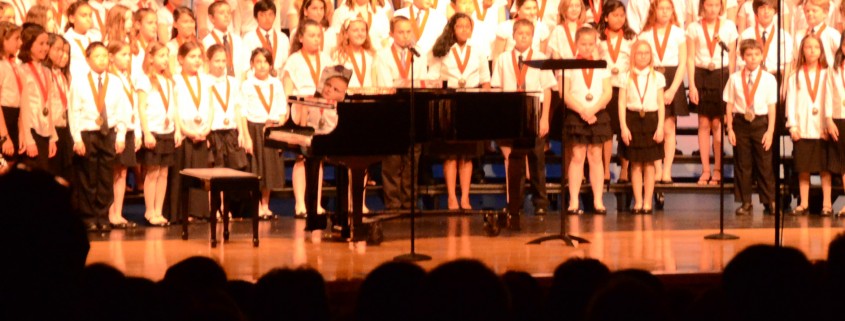What we can achieve together far exceeds what we can achieve alone.
As directors and singers, we intuitively know that choral ensembles succeed or fail as a group. A common trait among all great choirs is a heightened sense of ensemble. We can define this ‘sense of ensemble’ as awareness of how an one’s contributions interacts with the contributions of the rest of the group. Our choral ‘Spidey-sense,’ if you will.
It is crucial that we place high priority on developing a heightened sense of ensemble. Below are some ways that you can encourage your ensemble to sing together, not simply at the same time.
1. THE BREATH
Prioritizing a unified breath is the single most important thing a group can focus on to promote a heightened sense of ensemble.
In addition to having a bunch of positive technical effects (release of tension, establishing vowel shape on inhalation, etc), committing to a breath that is absolutely together instantly places high value on acting together. It increases our corporate awareness of what our fellow singers are doing, even before the moment of phonation.
To start together, breathe together.
2. FOCUS
This really comes first! We all have different ways of establishing focus at a rehearsal, be it a rhythmic call and response exercise, a succinct verbal reminder about expectations, or a routine activity. However you get it, the important thing is that this focus is established and maintained. Don’t talk over your choir, and demand that your group is focused before giving an instruction. Rehearsals will be more efficient, and you will repeat yourself less. The trick is to never accept a lack of focus.
3. PREPARATION
In many ways, learning to be a musician is learning the art of preparation. This might mean preparing for an audition, a rehearsal, or for singing a new phrase. So much of our lives involve intelligent and thorough preparation.
So, this means your singers need to know their music in order to be empowered to have musical opinions. Help free them from basic note/rhythm concerns by setting clear goals and expectations for knowing notes and rhythms. Some of my high school choirs use part recordings to learn their music. If you have a group that can sight-read from day one, celebrate!
4. RHYTHM
A shared rhythmic pulse is essential to unified ensemble singing. This should be communicated in the breath impulse from the conductor, and maintained by everyone. A basic rule for singers is to internalize the whatever division of the beat is most prevalent in a score (for example: if you’re in common time, and you’ve got a lot of dotted-eighth/sixteenth rhythms, you know your singers need to internalize the sixteenth note to execute the rhythm successfully).
Some find it helpful to identify the three ways of interacting with a tempo (behind, on, or in front of the beat). A focus on being in front of the beat seems to yield the greatest success!
5. FIRST SOUNDS
A phrase can only be as good as its first note, and by extension the breath that precedes it. Simply holding the first chord gives you an opportunity to assess how students are listening to each other, if we have a shared sense of tonal color, balance, etc. Make sure the first moment of a piece is successful. Remember, success breeds success!
6. PHRASE DIRECTION
Choirs have the privilege of working with text. Teach your choir to identify important syllables (circle them) and phrase to and away from them. Cultivate your singer’s intuitive ability to identify these important moments by asking them to share their opinions with their SINGING, not through verbalizing their ideas; they will discover they often have the same intuitive ideas about what words are most important.
Nouns and verbs are often important- they can always start with that!
-John Wilson
Relevant articles
http://www.bbc.com/news/science-environment-23230411




